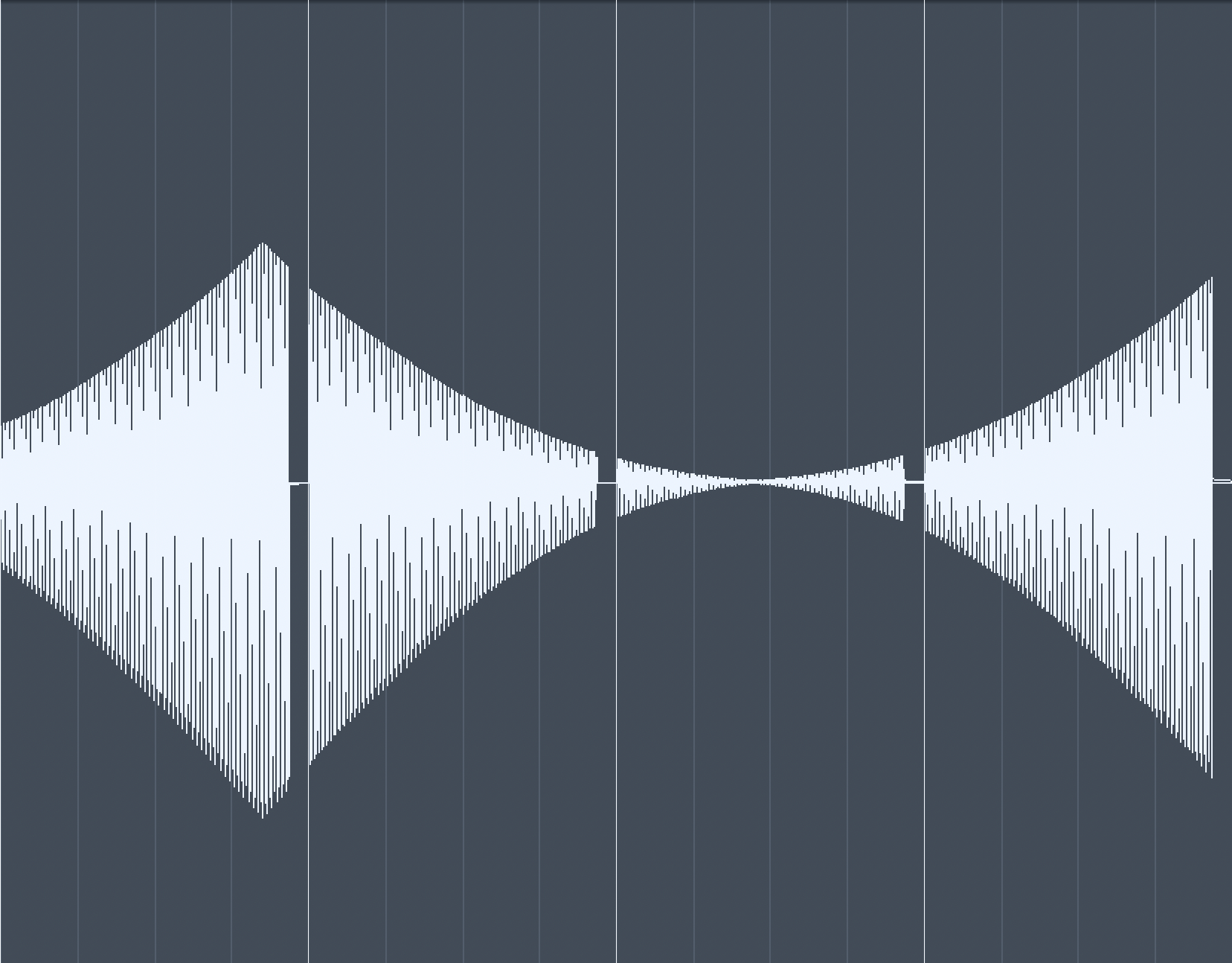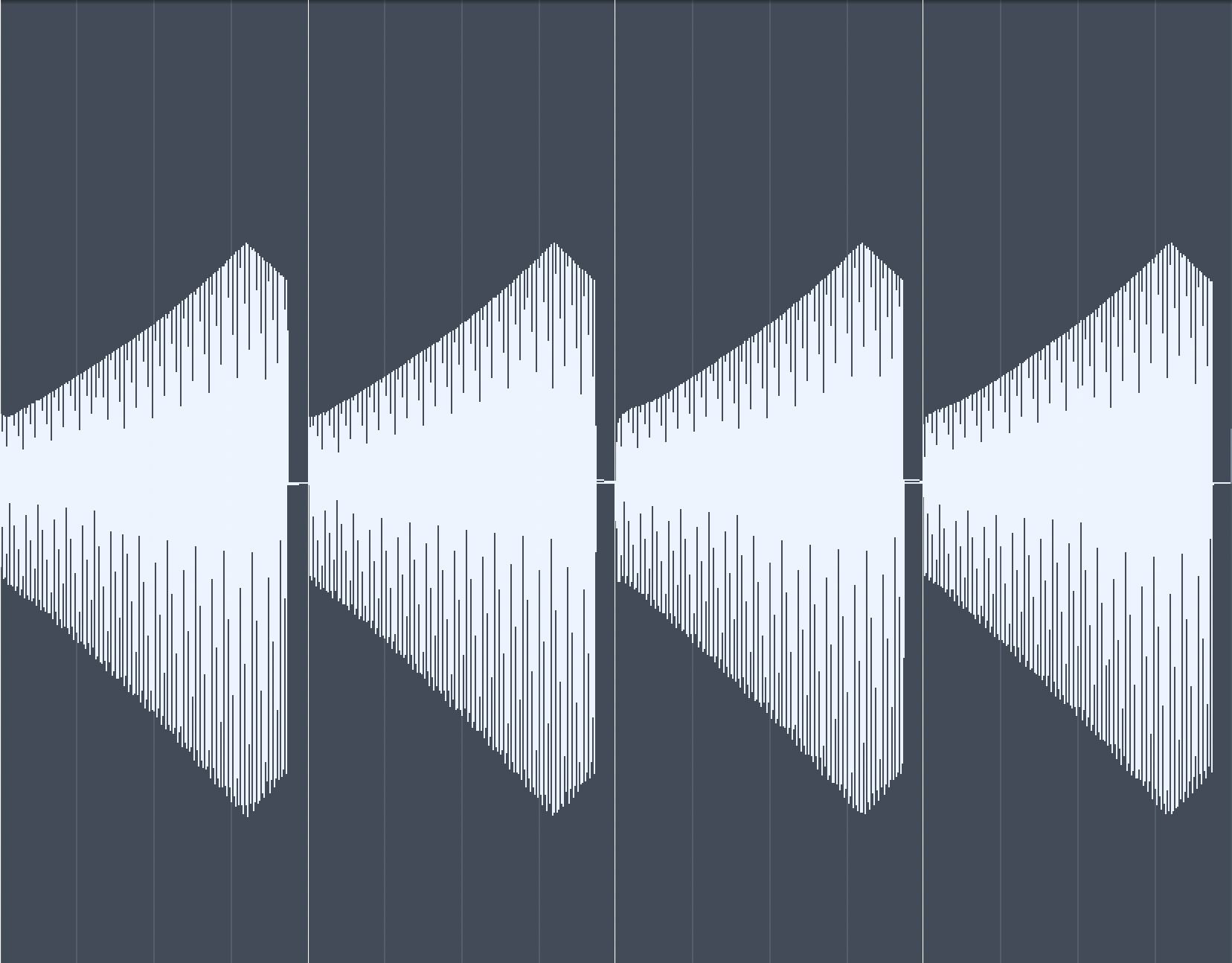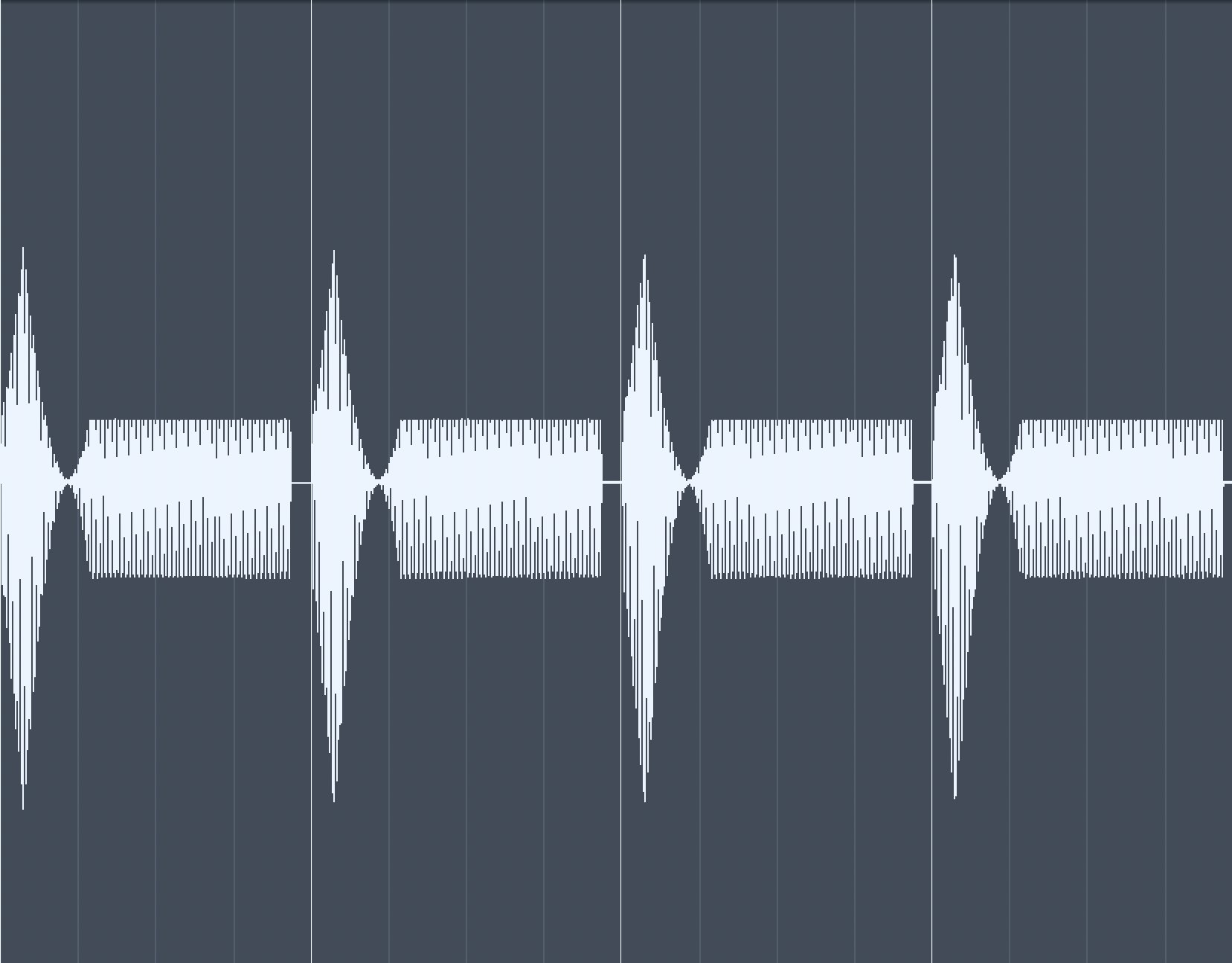LFO: Modes and Locked Retriggers
The LFO page of the Analog Four is dense with properties for controlling the size, shape, and frequency of the wave. It’s easy to overlook the unassuming MOD up in the corner, but it has perhaps the most dramatic effect on LFO behaviors of them all! Understanding it (and how it interacts with retriggers) really expands our modulation tool belt…
Run Free or Trig
First we need to understand the distinction between LFOs that are free-running vs. those that are triggered on each note. This is easiest to understand when looking at relatively slow LFOs over multiple notes.
For example, fig 1.1 shows four quarter notes playing a simple saw that has a slow triangle LFO modulating its volume. Here we can see that the LFO is moving the volume up and down more or less independent of when or where any note is played. Though four notes are triggered at four different times, the overall shape of the LFO (as visualized by the amplitude of the wave) is untouched.
That marks this LFO as being free running — it kind of modulates whatever its destination is assigned to in the background. When we play a note, we get it at whatever state it happens to be in.
Compare that to the triggered LFO in fig 1.2. Same four quarter notes. Same modulation and destination. But here the LFO restarts at the beginning of each note instead of free running. That marks it as a triggered LFO. Each time a note is triggered, the LFO resets itself and starts from the beginning again, giving a very consistent sound compared to a free running LFO which could be doing very different things depending on when a note is played.
LFO Modes
The Analog Four has five different LFO modes; FRE, TRG, HLD, ONE, and HLF. The biggest difference between these modes is whether they are free running (FRE and HLD) or triggered (TRG, ONE, and HLF).
Of these, FRE and TRG are kind of obvious. FRE is just a free running LFO. In fact, it’s the LFO we showed in fig 1.1 is in FRE mode. And it should be no surprise then that TRG is a triggered LFO and is what we used to capture fig 1.2.
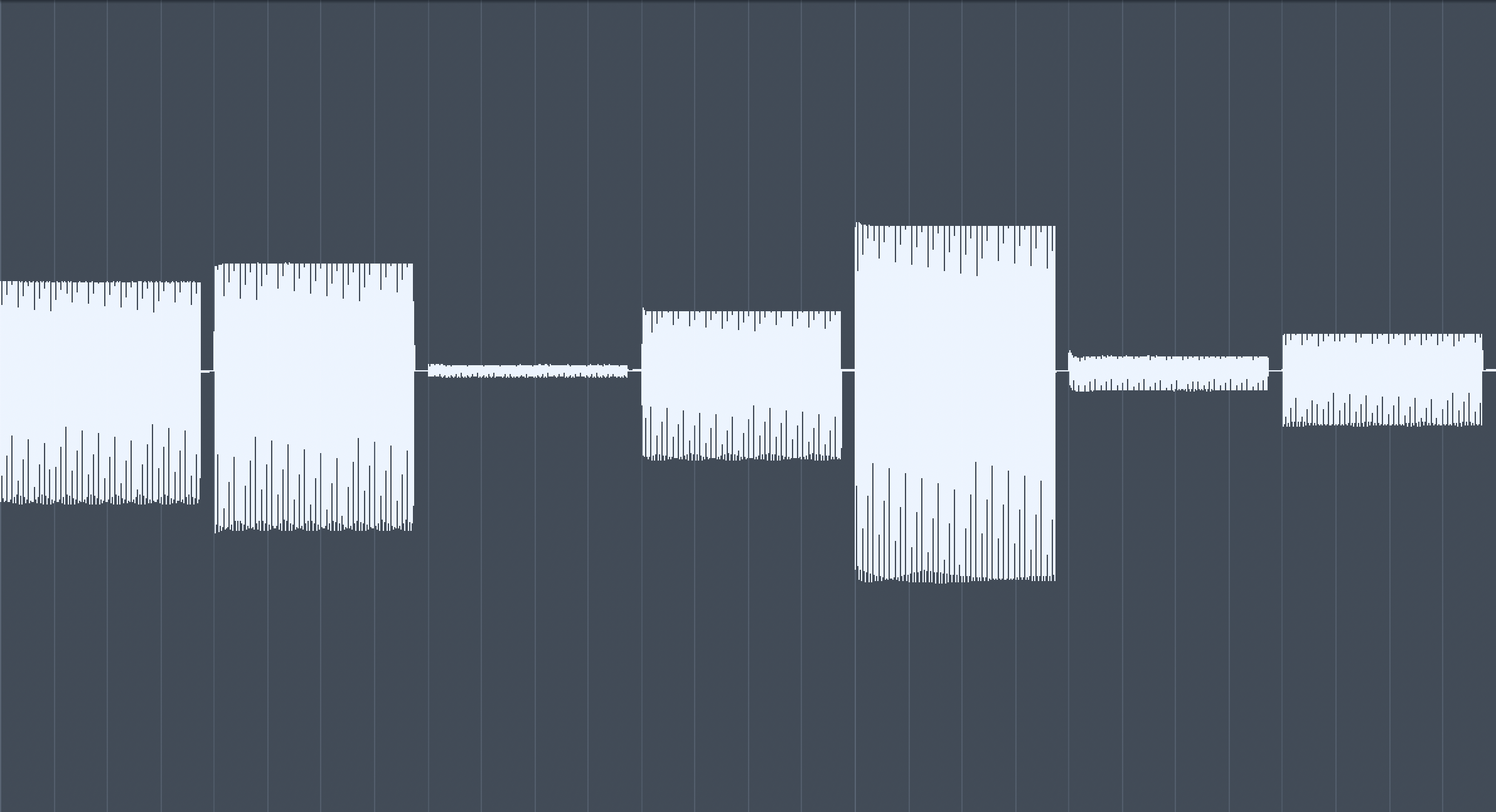
HLD keeps the LFO free running, just like FRE. The difference here is that, when a note is triggered, rather than allowing the modulation destination to continue to be affected by the LFO, it holds it in place (see fig 2.1).
The LFO, itself, continues to run — it is, after all, free running. But we won’t see its effect on the destination until we trigger a new note, at which point it will look at the position of the LFO and hold that new value. This process will be very familiar to anyone with experience of “sample and hold” mechanics in other synthesizers.
ONE is just like TRG (it resets its waveshape every time a note is triggered) but only runs through the LFO’s wave once.
In fig 2.2 we can see how this looks. Here we play four quarter notes with a triangle LFO set to ONE and modulating volume. The LFO resets each time a note is triggered, giving a consistent shape to each note. But see how after the volume goes up, and then down, and then back to its midpoint it just sort of stays there? That’s because after the wave plays once in a ONE LFO, it stops modulating.
HLF is very similar to ONE. The only difference is, rather than modulating over the whole wave once and stopping, a HLF LFO only plays half of the LFO before calling it quits.
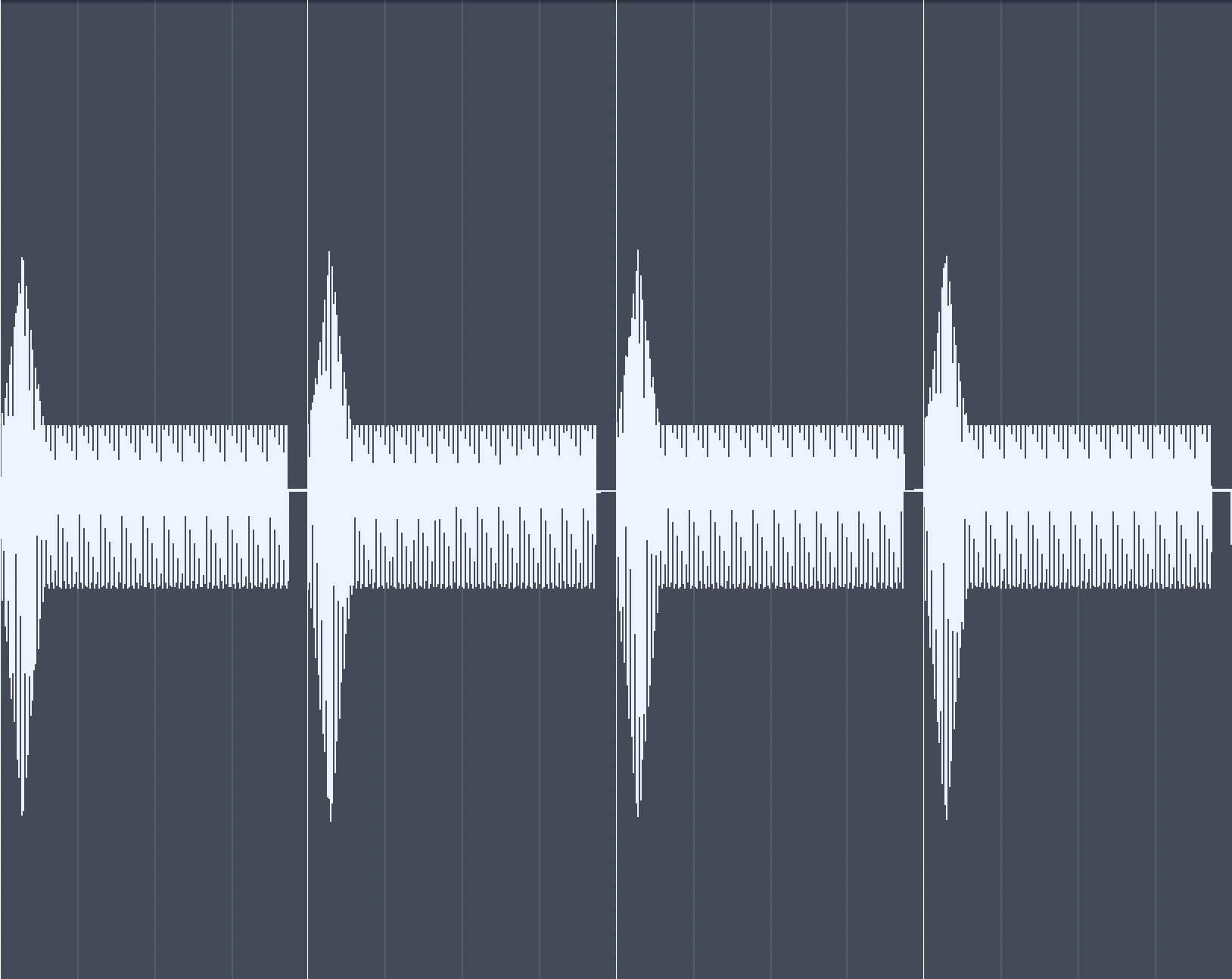
Why is this useful? Well most of the Analog Four’s LFO waveshapes are bipolar — that is, they add to their modulation destinations during the first half of their cycle, but subtract from them during their second. Sometimes it’s easier to think about modulation if it only goes in one direction. Running just half a wave through the LFO lets us do that, as we can see in fig 2.3. Note that, rather than going up above our initial level, and then below our initial level as ONE did in fig 2.2, the HLF LFO in fig 2.3 only goes in one direction — above our initial level and then back down to meet it again.
Retrigger Locks
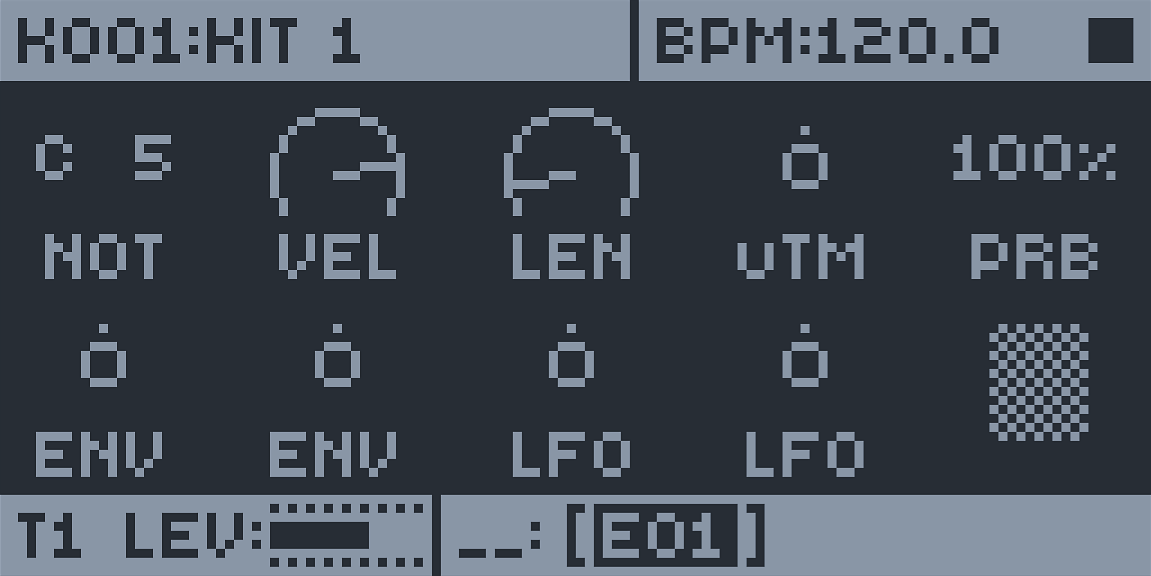
All this is complicated slightly by the “retrigger” locks present in the sequencer’s NOTE menu (see fig 3.1). When enabled via parameter lock on a trig (μTM, ENV, and LFO can only be set with a lock), the LFO settings cause either LFO1 or LFO2 to reset when the trig is played.
This has the effect of turning a free-running LFO like a FRE or HLD into a triggered LFO — at least for the step that has LFO locked. But what does it do to TRG, ONE or HLF LFOs that are already reset every note?
Not a lot. Though having NOTE’s LFO locked to “on” for a trig will force an LFO to reset, having it locked to “off” does not force an LFO to run free.
Why even have this option for LFO modes that are already triggered, then? Because even triggered LFOs are only reset when a note plays. But sometimes we might want to reset an LFO in the middle of, say, a sustained note. We don’t want the note to play again, we just want the LFO to reset.
In this case, we can insert a trigless lock. Normally it wouldn’t cause even a TRG LFO to reset becasue a trigless lock doesn’t cause a note to play. But if we lock it’s NOTE’s LFO property to “on”, now it resets just as we’d like.
